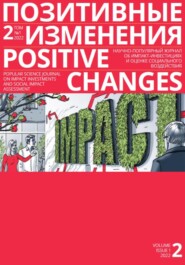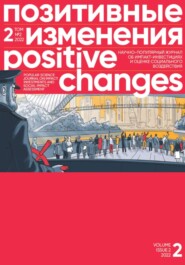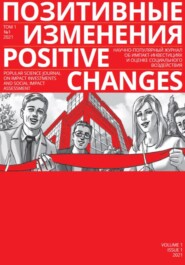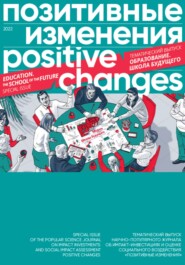По всем вопросам обращайтесь на: info@litportal.ru
(©) 2003-2025.
✖
Позитивные изменения. Города будущего. Тематический выпуск, 2022 / Positive changes. The cities of the future. Special issue, 2022
Настройки чтения
Размер шрифта
Высота строк
Поля
• sports fields;
• neighborhood centers;
• retail stores;
• entertainment and recreational facilities;
• schools / kindergartens;
• healthcare institutions;
• sociocultural sites.
Recent large-sample empirical studies of the demand for residential estate show that apartment buyers give weight to the availability of infrastructure such as stores, public transportation, recreational facilities, medical and educational institutions (Su et al., 2021). Apartments located close to such infrastructure usually sell for more, and therefore are in greater demand.
5. OPENNESS AND SHARED URBAN SPACES
Shared use of social infrastructure areas and buildings is important to establish social connections and prevent isolation of social groups and spaces. Schools, lecture halls, exhibition spaces, a theater, a swimming pool, a gymnasium, stadiums and playgrounds in the neighborhood, municipal administration spaces (such as meeting rooms) should become part of the well-being of all neighborhood residents and be open to them in the evening, sometimes even during the day and on weekends.
Reliance on the community of residents is noted as a feature of the Brighter World format projects being implemented in Russia, where the community is formed around the neighborhood infrastructure.
6. POLYCENTRICITY AND CONNECTIVITY BETWEEN ATTRACTION POINTS FOR RESIDENTS
The principle of territorial development, wherein comfort depends on the provision of all possible amenities and services within walking distance from the place of residence, as well as the possibility of local application of labor. It contributes to the principles of organizing the territory of the City of the Future and filling it with infrastructure.
The example of a polycentric orientation in Russian development is quite obvious – the emergence of New Moscow is positioned precisely as a polycentric response to the challenges of the Russian capital (Kotov et al., 2016). A few years ago, the points of attraction in Moscow were increasingly getting concentrated in the city center, causing a degradation of residential areas and decreasing transport accessibility in the downtown. With the establishment of alternative centers of gravity like the Moscow City and the New Moscow, some experts are hoping for a change in the status quo.
7. NEW MOBILITY AND PEDESTRIAN PRIORITY
This is the principle of 15-minute accessibility of all necessary infrastructure and well-thought-out walking routes. A variety of pedestrian routes and short distances between points of attraction allow residents to walk more without falling behind the rhythm of city life. At the same time, extensive transport network and safe speeds create comfortable conditions for any other form of travel: by bicycle or scooter, by bus, and in the extreme case by car.
The British sociologist John Urry presents the human being as a creature existing within time, and therefore in need of some kind of mobility – cultural, social, etc. Therefore, the city becomes a set of mobilities that are available to the individual in varying degrees. From this perspective, sidewalks become not just infrastructure, but places for social activity (Urry, 2012).
Many of the proposed principles are already being implemented in newly developed spaces within various neighborhoods and even cities. This sets a new fashion for sustainable development practices of areas.
8. CLOSENESS TO NATURE AND A WATER-AND-VEGETATION STRUCTURE This is what creates an attractive environment to live in, starting from day one. The implementation of "vegetation" infrastructure in the form of a boulevard will ensure the principle of cleaner development from the downtown to the outskirts. Also, in absence of enclosed neighborhood development, the boulevards penetrate residential development, creating a variety of "green" pedestrian routes. The use of the existing water resource in the area will make the residence more attractive and increase the number of recreational scenarios for the locals
9. RESPONSIBLE ENVIRONMENTALISM
The City of the Future creates responsible residents who are aware of their life scenarios (including health and education), their social involvement, and the preservation and multiplication of natural diversity. However, in order for the residents to be able to demonstrate their responsible attitude to nature, the City of the Future must have a full range of social and economic infrastructure with an emphasis on a responsible attitude towards the ecosystems:
• Stationary retail (chain stores, local stores, yard sale stores);
• Mobile retail (market squares, weekend markets, free markets);
• Catering (neighborhood cafes, community restaurants, buffets, open kitchens, food courts);
• Stationary food market;
• Wellness, diagnostic and beauty services;
• Pickup points for marketplaces and neighborhood chats;
• Co-working areas, open workshops and educational spaces (general and thematic);
• Sharing services (exchange, donation, and rental points);
• Construction, repair, household goods;
• Household services and aggregators of household services;
• Mutual Aid Centers (Dobro.Centers, Volunteer Centers Association);
• Separate waste collection centers (food, municipal solid waste, etc.)
and so on – as initiatives and projects are implemented in the field of small and medium-sized businesses, social entrepreneurship, social and charitable projects.
Thus, the availability and development of infrastructure becomes the result of the residents’ initiatives and a platform for the implementation of new initiatives, as well as a magnet attracting innovative technological and social elements to the Cities of the Future from other cities and countries.
Many of the proposed principles are already being implemented in newly developed spaces within various neighborhoods and even cities, in Russia and abroad. This sets a new fashion for sustainable development practices of areas that are open to change and provide a variety of scenarios of city living with respect for both nature and the community of residents.
REFERENCES
1. Su, S., He, S., Sun, C., Zhang, H., Hu, L., & Kang, M. (2021). Do landscape amenities impact private housing rental prices? A hierarchical hedonic modeling approach based on semantic and sentimental analysis of online housing advertisements across five Chinese megacities. Urban Forestry & Urban Greening, 58, 126968. https://doi. org/10.1016/j.ufug.2020.126968.
2. Kotov, E. A., Goncharov, R. V., Novikov, A. V., Nikogosyan, K. S., & Gorodnichev, A. V. (2016). Moscow: A Course Toward Polycentricity. Assessment of the Effects of Urban Development Projects on the Polycentric Development of Moscow. Moscow: Higher School of Economics Publishing House.
3. Urry, J. (2012). Sociology Beyond Societies: Types of Mobility for the 21st Century. Moscow: Higher School of Economics Publishing House, pp. 31–41.
Кейс выпуска / Case
Сообщества как драйвер развития территории. Опыт проекта «Солидарные сообщества»
Соучастное проектирование, организация сообществ, лидеры изменений, вовлечение граждан – понятия, за последние три года прочно вошедшие в оборот, если речь заходит о развитии территорий. Стоит отметить, что в общественном сознании связаны все эти термины, скорее, с урбанистикой и благоустройством, нежели с социальной сферой. Так что такое сообщества и могут ли они развивать территорию? Своим взглядом и опытом делится Фонд Тимченко, чья программа поддержки социокультурных проектов стала драйвером развития малых территорий.
Евгения Рудина-Ладыжец
Руководитель пилотного проекта «Солидарные сообщества» Фонда Тимченко
ПРО МАТЧАСТЬ
Несмотря на то, что понятия «сообщество», «социальная сплоченность» и «социальный капитал» активно развиваются с 1980-х научными деятелями из разных сфер, от психологии до экономики, единого подхода к ним сейчас нет. Более того, с начала 2000-х западные ученые (Клод Фишер, Майкл Вулкок) в целом критикуют эти понятия как впитавшие слишком обширный смысл и оттого потерявшие свое значение и конкретность. В России трудов, посвященных теме сообществ и связанным с ними понятиям, не так много, и в основном они выстроены на исследованиях городских сред и соседских сообществ (Карасев Ф. Г., Шомина Е. С., Гужавина Т. А.). Так или иначе, большая часть исследователей сходится в одном – и социальный капитал как совокупность сильных и слабых связей, и объединение людей по ряду признаков в сплоченную группу, происходят не сами по себе в вакууме, а для достижения неких общих благ в будущем.
Согласно исследованию, которое провела по заказу Фонда Тимченко в 2020–2021 году КБ Стрелка совместно с приглашенными экспертами, красной линией за историю использования термина «сообщество» проходят три основных интерпретации: связь с местом, общие интересы и социальная солидарность, общественный активизм. В своей работе мы постарались объединить эти интерпретации.
Совмещая эти подходы, у нас получились следующие определения:
Местное сообщество – сообщество, которое объединяет людей, совместно проживающих на одной территории. Чем меньше населенный пункт, тем теснее социальные связи, которые объединяют людей внутри сообщества (классическая модель местного сообщества – сельская община). В крупных городах местные сообщества начинают дробиться по районам и соседствам, начинают иметь меньшую роль в жизни социума.









